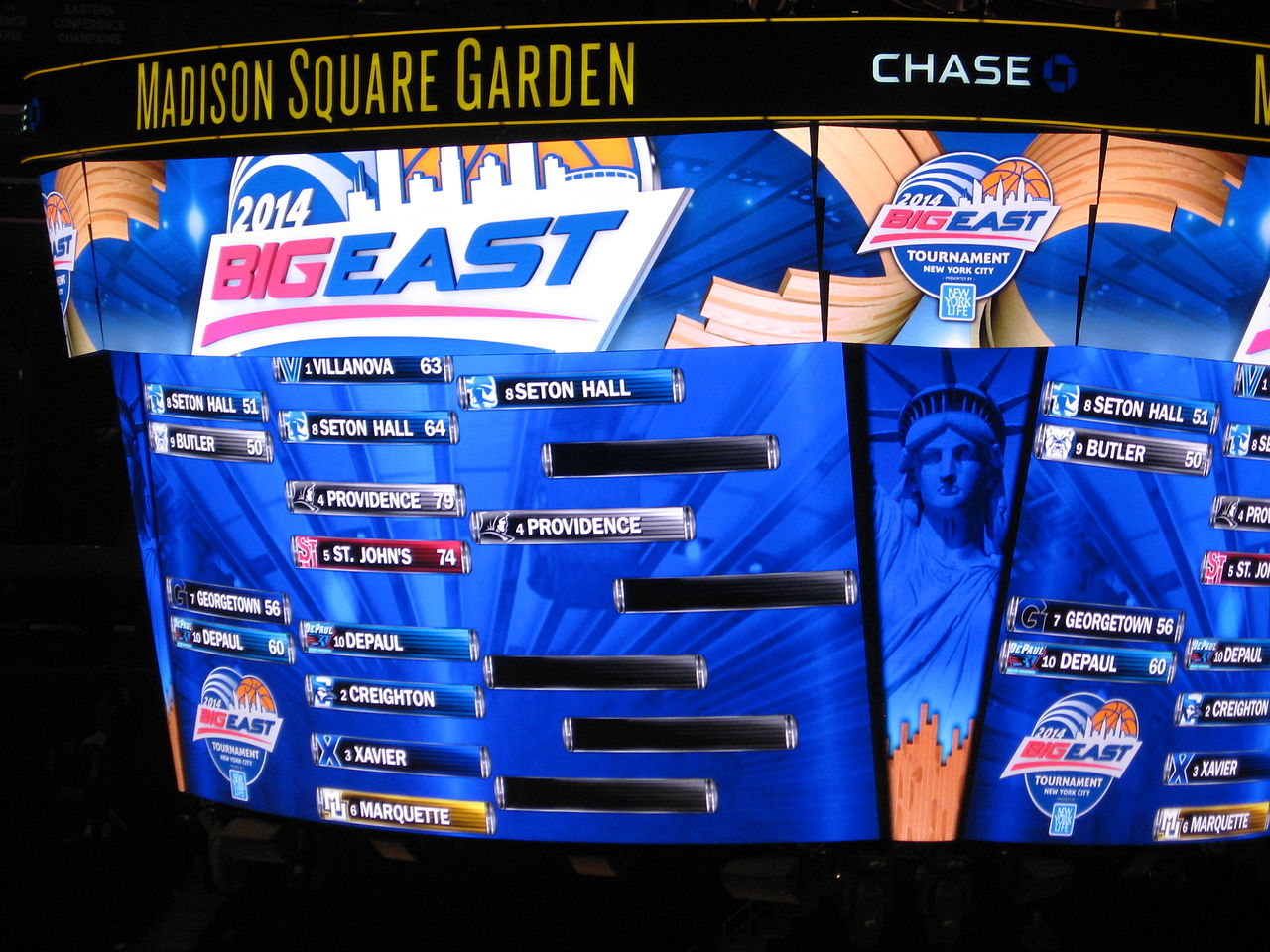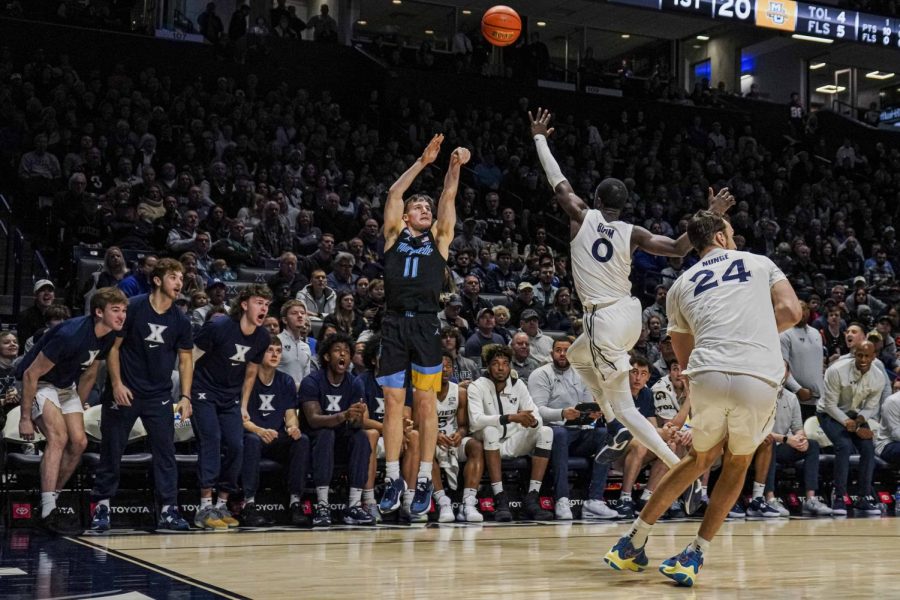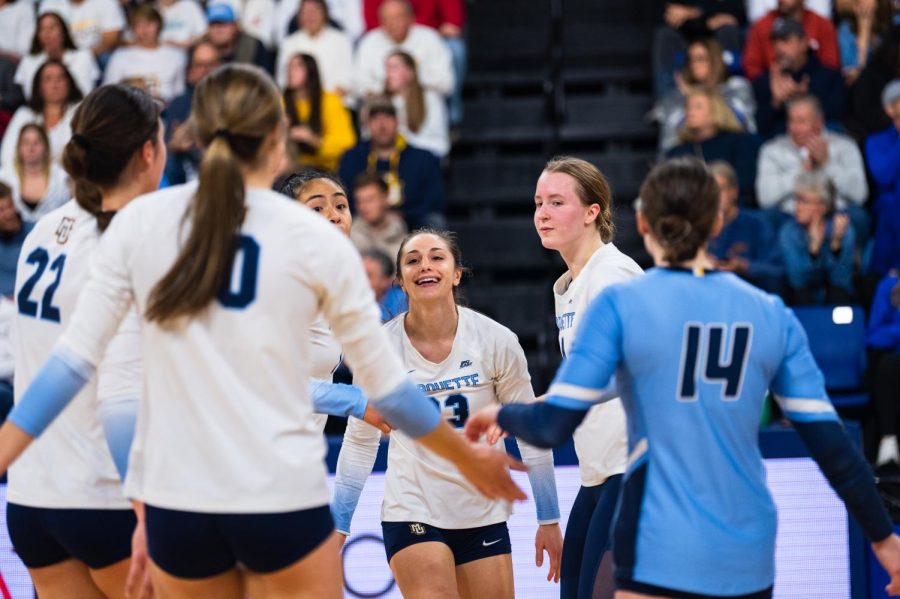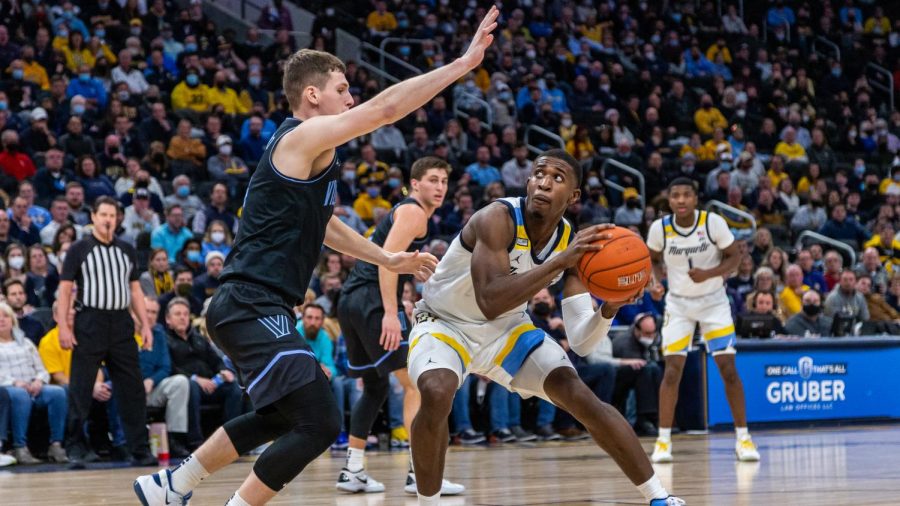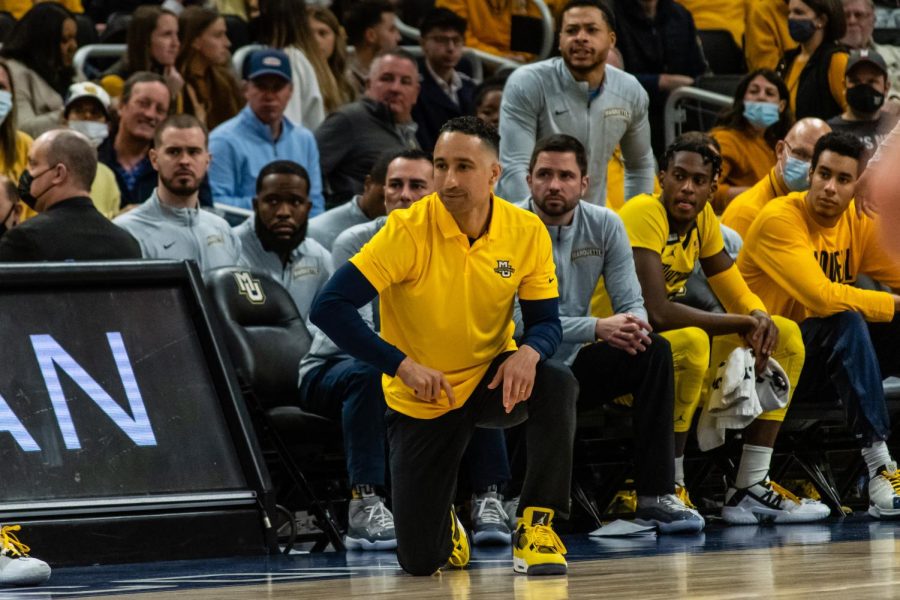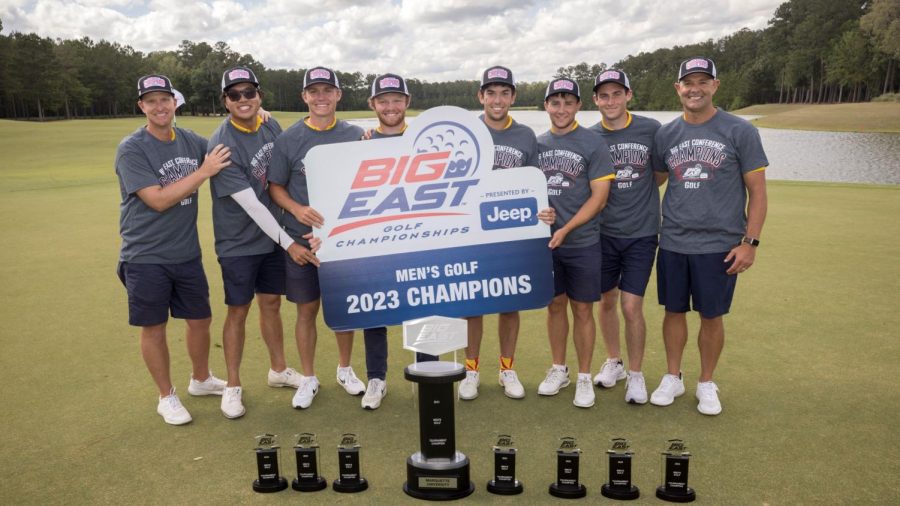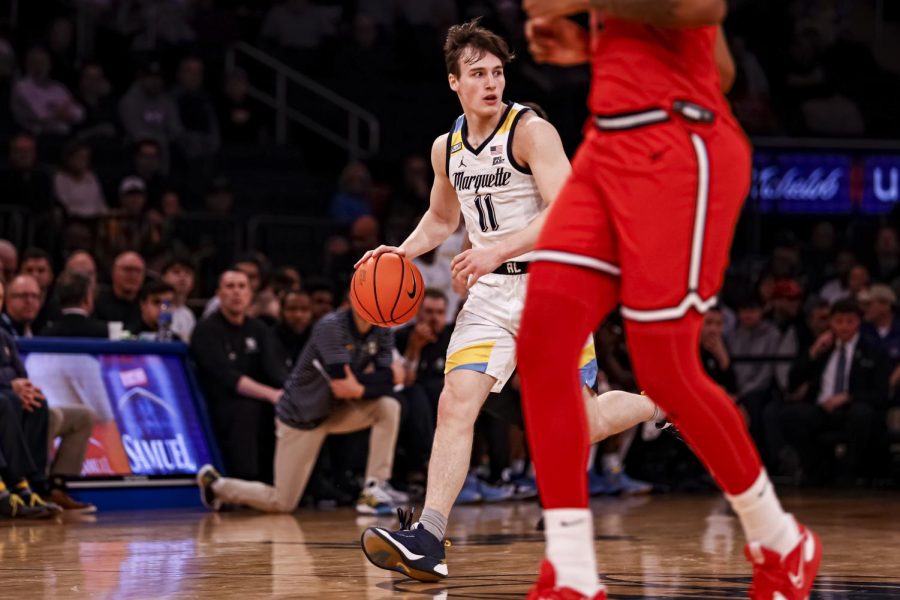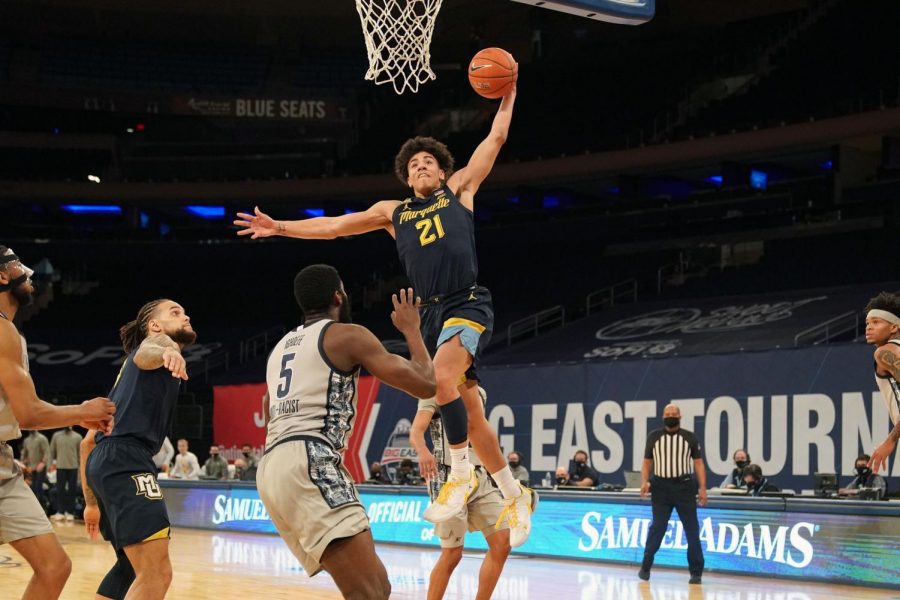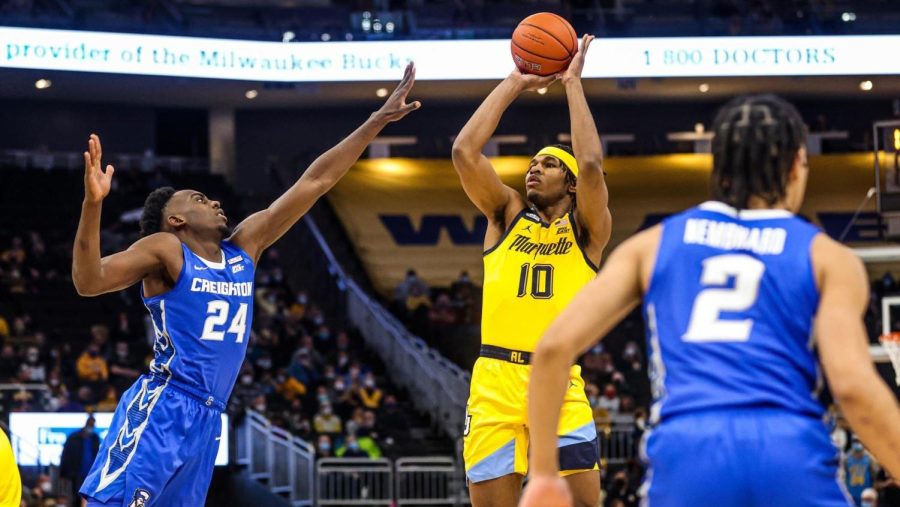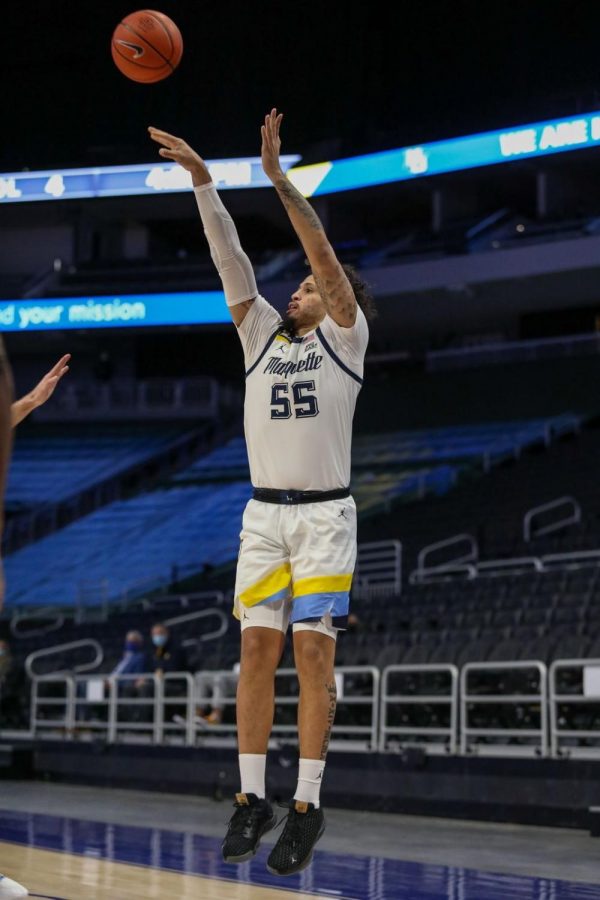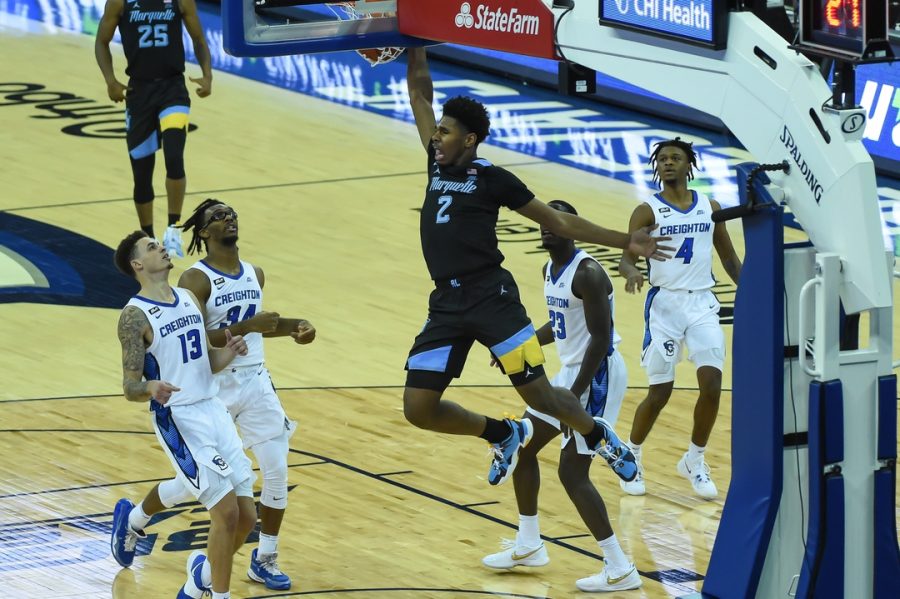Sometime in the late 2000s, ESPN decided it was going to be everything to everybody.
It was a bold, ambitious play at what seemed like the right time. ESPN was a couple years away from its 2011 zenith of over 100 million cable subscribers, so who cared if the new NFL rights deal cost $15 billion? Local newspapers and TV outlets looked like they were on their way out in major cities, so why wouldn’t ESPN expend enough resources to replace every one of them? Why would costs matter to a company whose money grew on trees?
Another powerful outfit reached the arguable peak of its powers in 2011: the old BIG EAST. The 16-team conference was stacked to such an absurd extent that looking at its Wikipedia page without laughing is a bit difficult. Eleven of the 16 teams made the tournament, an all-time BIG EAST record. A 20-win Marquette team finished with the 11th seed in the conference. We probably won’t see anything like it again for a long time.
Very few people could have foreseen that within the next five years, both outlets would undergo a sort of creative destruction. It happened rapidly in the case of the BIG EAST; everything from the separation of the “Catholic 7” to the new league’s first conference game happened in under two years. ESPN has undergone more of a slow burn since 2013, losing roughly 15 percent of its subscribers in four years and laying off hundreds of employees, including well-known staff. There’s no way to predict when the damage will end or what will emerge in its wake.
ESPN and the BIG EAST’s split seems like it happened decades ago instead of years ago. Nobody makes a big deal out of it now, but the signing of a new deal with the fledgling FOX Sports 1 was supposed to mark the “death” of the BIG EAST, or at least its regression to a second-tier conference. Instead of airing the BIG EAST Tournament on ESPN to an average audience of more than a million people per game, the first year on FS1 drew just under a third of that. People were so convinced the BIG EAST was done that ESPN literally aired a two-hour documentary (an excellent one, by the way) that fancied itself as a sort of long-form epitaph for the conference.
Smash cut to 2017 and everything looks completely different. Ratings on the FOX Sports networks are up 16 percent from last year and over 80 percent from the first season in 2014. While the BIG EAST’s average of 192,000 viewers per game was still nowhere near the figure it used to draw at ESPN, it’s also far from the death that most people foresaw. A lot of that can be attributed to having great basketball, but the conference was at least reasonably strong when people were bemoaning its early demise, too. The truth of the matter is there’s a loyal audience for BIG EAST basketball and being on a different network didn’t change that.
Moreover, FOX Sports has done a really good job with production. There are a ton of criticisms you could level at FOX Sports and I probably agree with all of them, but BIG EAST basketball has received first-class treatment. The graphics are crisp, the announcing teams are solid (Bill Raftery is a treasure no matter what network he’s on) and they’re willing to try innovative stuff. And then there’s the cherry: the airing of every single conference game on the FOX family of networks. That’s one thing ESPN never could have offered.
At the moment, the BIG EAST is the only major conference in college basketball to not have any portion of its rights held by ESPN. You’d think that would be a pretty substantial problem, yet the reformed conference is doing better than most people thought it would. That raises an interesting question: Now that a major college basketball conference has shown that survival without ESPN is possible, will others start to break away, too?
It’s a question we won’t find out the answer to until the next round of collegiate media rights deals comes up, which won’t be for a long time. Five of the six biggest basketball contracts expire between 2022 and 2026 and the Big Ten is locked in beyond 2030. During the interim, cable networks will presumably continue to hemorrhage subscribers while media rights costs remain locked in, prompting even more cuts.
In the pre-cord cutting era, everybody wanted to be with ESPN because they had the biggest audience and could afford to pay the most money. If trends continue and ESPN loses 15 to 20 million more subscribers by the mid-2020s without a way to replace the lost revenue, then they’re not going to be the biggest game in town anymore. We’ll see a new ESPN that, while still prominent, will have to pick its spots in negotiations. That means a few major conferences may do what the BIG EAST did over a decade earlier and leave.
Assuming that day ever comes, the BIG EAST will be in a great position because of the very thing that doomed the old conference: a lack of competitive football. While college football drives more revenue toward the so-called “Power Five” conferences than the basketball-only BIG EAST could ever hope to see, it also imposes massive expenses that no BIG EAST program has to deal with. Alabama, for instance, spent over $50 million on its football program last year, which is more than the entire shared annual value of the BIG EAST deal. Most of that money came from the school’s cut of – you guessed it – conference media rights fees.
Everybody else in the major conference arena has gotten used to a lucrative lifestyle that will be unsustainable in a few years given the way the media landscape seems to be shifting. On the day everything changes, those conferences will scramble to adjust to a world where they don’t have unlimited money anymore. It’s a world the BIG EAST has lived in for a few years now, with the difference being that the BIG EAST is the only one in the room that doesn’t have to worry about paying football expenses. Creighton coach Greg McDermott made that point in a Marketwatch story from February. He also said that the BIG EAST is fine, adding that “we’re all flying around in private jets recruiting.”
None of this is to say the BIG EAST flipped the table on ESPN; the conference still isn’t getting the audience that it used to and ESPN is probably fine with not paying a single dime more in media rights than it has to pay. Still, the conference and, by extension, Marquette are getting along well without the network that was the traditional kingmaker in college sports for decades. It’s quite possible we’ll all look back on these last few years sometime in the 2020s or 2030s, after another major conference or two leaves, and say, “Wow, the BIG EAST was ahead of its time.”

